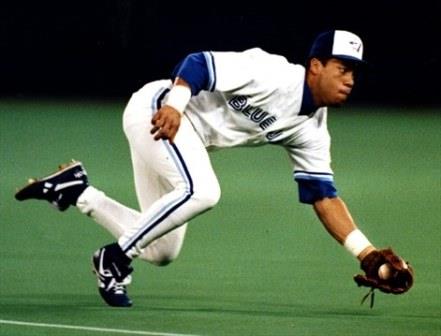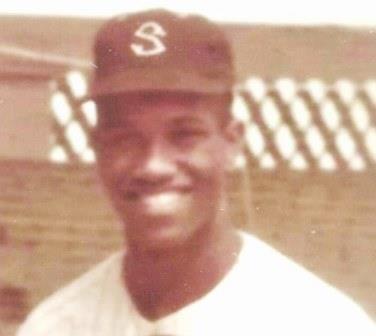
Some 40 years, I asked my father (Sam) who were the top second basemen (2B) of all-time, and who was the best 2B he played against? Dad opined that Eddie Collins of the Philadelphia A’s/Chicago White Sox was the “best all-around 2B, as a switch-hitter, clutch hitter, four World Series rings, plus two other World Series teams (1914 A’s and 1919 White Sox) favored to win, but lost those series.” Sam stated that Rogers Hornsby—by far—was the best all-time hitting MLB 2B and that Nap Lajoie also was a terrific hitter. Joe Gordon was the top 2B dad played against when his Washington High School team in Portland, Oregon, played Gordon’s Lincoln team, also based in Portland, early 1930s. Sam was a switch-hitting catcher/LF in high school.
When it came to “current players,” dad put Joe Morgan, Cincinnati Reds, as the best 2B he watched (on TV) in the 1970s and in his top five/six all-time MLB 2B, slightly ahead of Charlie Gehringer and “better 2B than Jackie Robinson.” Morgan combined speed, power, fine fielding, back-to-back NL MVP Awards in 1975-1976, plus 1975/1976 World Series titles. Dad’s favorite 2B from Puerto Rico was Félix Millán, a 2x Gold Glove winner with Atlanta (1969, 1972) and 3x All-Star (1969-71). Dad passed away in 1981, so he never saw Roberto Alomar play.
This article focuses on how Roberto Alomar—12x All-Star, 10x Gold Glover, 4x Silver Slugger—ranks to other great MLB 2B of all-time, from five ranking sources: 1) espn.com, 2) ranker.com, 3) bleacherreport.com, 4) athlonsports.com and 5) thoughtco.com. Links to all five sources are listed. Point system used for final Top 10: 20 points for #1 ranking, 18 points—2nd place, 16—3rd, 14—4th, 12—5th, 10—6th, 8—7th, 6—8th, 4—9th, 2—10th. If Rogers Hornsby was ranked #1 on all five sites, he would have 100 points (5 x 20). He almost did, scoring 98 points!
Players had to play at least 10 complete MLB seasons. Stats from Negro Leagues and Winter Leagues are not part of this analysis. Some MLB post-season stats were mentioned in the case of Eddie Collins and Roberto Alomar, to reinforce or comment on their ranking/clutch hitting ability. Jackie Robinson played first base/OF, plus 2B. Rod Carew transitioned from 2B to 1B in his career. These realities may or may not have affected their 2B votes? Rankings make use of Wins Above Replacement (WAR) and other SABR metrics, but this was not a SABR project.
Rankings are subjective and readers of this article are entitled to their own views. It’s possible that defensive metrics had less emphasis than offensive production in some sites, but Gold Gloves earned were cited under Honors on espn.com, for example. José Altuve, an outstanding hitter, and Javy Baez—a wizard at 2B/elsewhere—have not met the criteria of 10 complete MLB seasons. Another key point: the author did not know how the five sites ranked the all-time list of MLB 2B, when he selected each of these five sites. This removed research bias.
Roberto Alomar, a switch-hitter and 2011 Cooperstown Hall of Fame inductee, came in 6th place on the espn.com site, after Hornsby, Jackie Robinson, Joe Morgan, Nap Lajoie and Rod Carew. Eddie Collins (7th), Ryne Sandberg (8th), Charlie Gehringer (9th) and Robinson Canó (10th) were behind Roberto Alomar. This voting took place in the summer of 2016, prior to Canó’s 80-game suspension in 2018. Sandberg’s nine Gold Gloves, 10x All-Star, seven Silver Sluggers and 2005 Cooperstown Hall of Fame induction were vital. Eddie Collins’ 7th place ranking on espn.com was his weakest; other four sources had him first, second twice and third.
Hornsby, career WAR 127, .358 BA, .434 OBP, .577 SLG, 1.010 OPS, hit .400 or higher three times, and led the NL in both OBP and SLG nine times and BA seven times. He later became an MLB, minor league and 1950-51 Puerto Rico Winter League manager (Ponce Lions) and was Casey Stengel’s 1962 hitting coach for the New York Mets. Ranker.com listed Hornsby, Lajoie, Collins, Gehringer, Frankie Frisch, Tony Lazzeri, Nellie Fox, Roberto Alomar, Sandberg and Morgan. Lazzeri won five World Series rings with the Yankees (1927-28, 1932, 1936-37) and had seven seasons with over 100 RBIs. Fox was a mentor to Joe Morgan with the 1965 Houston Astros, and helped make it possible for Morgan to become Houston’s regular second baseman.
https://www.ranker.com/crowdranked-list/greatest-2nd-basemen-of-all-time
The bleacherreport.com was the only site ranking Eddie Collins #1 and Hornsby #2. Collins’ 3,315 career MLB hits are the most by a 2B. His career WAR of 124 is second to Hornsby for 2B. His lifetime BA was .333 and he hit .320 or higher 14 times and 744 career SB included a league-leading 81 in 1910. Collins led the AL in SB three other times: 1919, 1923 and 1924. In six World Series, he hit .328, stole 14 bases in 34 games and had a .381 OBP.
Joe Morgan (WAR 100.6) ranked third on this site, which called him an “incredibly intelligent, exciting second baseman.” Morgan’s career .392 OBP was below Collins’ .424, but Morgan had 268 career homers, 1,865 walks and 689 SB, combining power with speed. He stole 60+ bases three times. Lou Brock kept Morgan from leading the NL in SB mid-1960s-to-late 1970s.
Jackie Robinson, Cooperstown class of 1962, and number four on bleacher report, was 1947 NL Rookie of the Year, with four top 10 MVP finishes and a 1949 NL MVP. His lifetime .311 BA, .409 OBP, .474 SLG and .883 OPS were higher than Roberto Alomar’s .300 BA, .371 OBP, .443 SLG and .814 OPS. Gold Gloves were not awarded until 1957, after Jackie’s retirement.
Nap Lajoie (WAR 107.4) got the fifth spot (bleacher) based on a career .338 BA, .380 OBP. 466 SLG and .846 OPS, numbers fairly close to Roberto Alomar, except for BA. Lajoie won five AL batting crowns and the Cleveland Naps were named after him, a unique distinction.
Craig Biggio (sixth place, bleacher report) edged Roberto Alomar (seventh), but Alomar’s seventh overall ranking eclipsed Biggio’s 11th place spot. Biggio and Alomar were true contemporaries, starting their MLB careers in 1988, but Alomar was a 2B from the beginning whereas Biggio was a catcher, then (mostly) 2B, then an OF. Biggio cracked the 3,000 hit club with 3,060, but his career .281 BA, .363 OBP, .433 SLG and .796 OPS were below Roberto Alomar’s career figures in those metrics. Alomar stole 60 more bases than Biggio: 474-to-414.
https://bleacherreport.com/articles/326805-top-ten-second-basemen-of-all-time?share=email
Athlon Sports listed Hornsby, Collins, Lajoie, Jackie Robinson and Gehringer, one-through-five. Gehringer was a 6x All-Star who played for the Detroit Tigers 1935 World Champions. He was the 1937 AL MVP and 1949 Cooperstown Inductee. His best season may have been 1929: 131 runs, 215 hits, 45 doubles, 19 triples, 13 HR, 106 RBIs, the first of seven times he had had over 100 RBIs. In 1936, he hit 60 doubles. MLB career: .320 BA, .404 OBP, .480 SLG, .884 OPS.
Sandberg-Carew-R. Alomar-Biggio-Lou Whitaker were six-through-ten on Athlon Sports. Carew was an 18x All-Star, seven-time AL batting champ, 1977 AL MVP, with 3,053 career hits. The 1967 AL Rookie of the Year hit .328 BA, .393 OBP, .429 SLG, .822 OPS, numbers which Roberto Alomar approached except BA: .381 OBP, .443 SLG (higher) and .814 OPS. Carew played one season of winter ball in Venezuela (1971-72) with Aragua.
Whitaker was only listed (10th) by Athlon Sports. He was a 5x All-Star, 4x Silver Slugger, 3x Gold Glove recipient, 1978 AL Rookie of the Year and 1984 World Series champion, all with Detroit. His line: .276/.363/.426/.789, was supplemented by power—244 homers, 1084 RBIs.
https://athlonsports.com/mlb/10-greatest-second-basemen-major-league-baseball-history#11
Last but not least, thought company (thoughtco) listed Hornsby-Collins-Lajoie-Gehringer-Jackie Robinson-Frisch-Joe Morgan-Sandberg-R. Alomar-Jeff Kent, one-through-10. Frankie Frisch was called “The Fordham Flash,” from his college years at this fine university in the Bronx. Frisch helped John McGraw’s New York Giants win four straight NL pennants (1921-to-1924), and 1921-1922 World Series crowns over the New York Yankees. From 1921-to-1926, he averaged over 100 runs scored/never hit below .324. He was traded to the St. Louis Cardinals for Rogers Hornsby (one-for-one) after the 1926 season. Frisch was on four NL pennant-winning teams with the Cards: 1928, 1930, 1931 and 1934. He was player manager on the 1934 team which featured 30-game winner Dizzy Dean. Frisch earned four World Series rings, including 1931 (player) and 1934 (player-manager) with St. Louis. Frisch, a switch-hitter, stole 419 career NL bases, 55 fewer than Roberto Alomar’s total of 474 in both the NL and AL.
Jeff Kent was only listed (10th) on Athlon Sports. He might have been affected, in the minds of baseball sportswriters, by hitting most of his HR in the era of performance-enhancing drug use. Kent had 377 lifetime HR, the most of any MLB 2B, followed by Canó (311 going into 2019), Hornsby (301), Biggio (291), Sandberg (282), Joe Morgan (268), Chase Utley (259), Joe Gordon (253), Bret Boone (252), Ian Kinsler (248 going into 2019) and Lou Whitaker (244). Roberto Alomar had 210 career MLB homers and 1,134 RBIs, along with 2,724 lifetime hits. Alomar’s MLB post-season stats included: .313 BA, .381 OBP, .448 SLG and .829 OPS.
https://www.thoughtco.com/top-second-basemen-of-all-time-320717
Total points total, top 10 MLB 2B of all-time: Hornsby (98), Collins (80), Lajoie (76), Joe Morgan (56), Gehringer (50), Jackie Robinson (44), Roberto Alomar (34), Sandberg (26) Carew (24), and Frisch (22). Then, Biggio (14), Lazzeri (10), Nellie Fox (8), Jeff Kent (4), Canó (2) and Lou Whitaker (2). These points are the SUM of the scores from all five sources cited, with 20 points earned by first-place, down to 2 points for 10th place. Total points come to 550 because there were 110 points awarded for slots’ one-through-10 in each of the five ranking sites. Roberto Alomar’s #7 overall ranking here for all-time MLB 2B is quite impressive.
I wish to dedicate this article to the memory of my dad, Sam John Van Hyning Jr. He and I had some interesting baseball conversations over the years, including the one in 1979 on MLB 2B.

